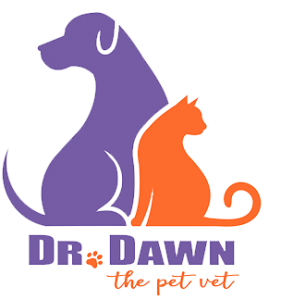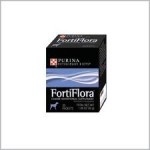 Misconceptions and myths surrounding pet foods are common. Navigating the pet food aisle can be daunting. If you are confused about what the labels mean, you are not alone. It is confusing, and there is almost a code that you need to decipher what all the terminology really means. The labels can be misleading and even deceptive.
Misconceptions and myths surrounding pet foods are common. Navigating the pet food aisle can be daunting. If you are confused about what the labels mean, you are not alone. It is confusing, and there is almost a code that you need to decipher what all the terminology really means. The labels can be misleading and even deceptive.
I spend a lot time during exams discussing pet food choices. People seem to have the strongest opinions on why they do or don’t select a diet for their pet, often guided by the internet, salespeople, or misconceptions regarding what exactly is BEST. Pet parents all want to do what’s best for their pets, and seek out information, sometimes, inadvertently, in the wrong places, Remember, there are many good options. Again, my hope is to more clearly help educate you about what you are buying and feeding, and to make that diet decision easier .
Grain Free, Natural, Holistic, Organic, Raw
– Holistic– The dictionary defines holistic as “relating to or concerned with wholes or with complete systems rather than with the analysis of, treatment of, or dissection into parts”. Essentially, it means considering the needs of the whole animal, not just certain systems or particular aspects of nutritional needs. However, no definition of the term has been generally accepted by the pet food industry, and there currently are no regulations or legal definitions for labeling a food “holistic”, allowing for misrepresentation of the term and its implications of benefit. Moreover, based on the dictionary definition, all satisfactory pet foods are holistic.
– Organic – This refers to the way ingredients are grown, harvested, and processed. The USDA has yet to define “organic” as it applies to pet foods. In the interim, pet foods meeting the human standard may display the organic seal with the following restrictions:
– “Organic” – If 100% organic, may display the organic seal.
– “Organic” – If at least 95% of the content is organic by weight (excluding salt and water), it may display the organic seal.
– “Made with Organic”- If at least 70% of the content is organic. Can cite up to three specific ingredients or classes of ingredients on the front panel. Cannot use the USDA official organic seal.
– If less than 70% of the content is organic only those organic ingredients may be listed and only on the ingredients panel with no mention of ‘organic’ elsewhere on the product. These foods cannot display the USDA official organic seal.
 – Raw/B.A.R.F. (Biologically Appropriate Raw Foods/Bones And Raw Foods)-
– Raw/B.A.R.F. (Biologically Appropriate Raw Foods/Bones And Raw Foods)-
These diets are produced to provide a diet thought to mimic what cats and dogs eat “in the wild”. These diets generally consist of variable combinations of raw meats, grains,vegetables, and bones. Like grain-free diets, there is no scientific evidence that feeding a raw vs. a conventional diet is any more beneficial to an animal’s health. However there is ample evidence that it is not. Moreover, these diets also have generated controversy due to their increased risk for microbial contamination. Exposure of pets and their owners to dangerous bacteria have the potential to cause serious illness. Careful cleaning of all food handling surfaces must be practiced to prevent microbes from contaminating humans and pets. There is also risk of gastrointestinal problems and/or injury from bones in the diet, and the possibility of an unbalanced raw diet causing nutritional deficiencies and directly resulting in illness. If a client is still intending to feed raw diets, I tend to recommend that they be carefully selected and researched before use, and then only by owners comfortable with safe handling procedures (http://www.foodsafety.gov/) for raw foods.
It also bears mentioning that no objective scientific evidence has yet demonstrated that feeding Grain Free, Natural, Holistic, Organic, or Raw diets to otherwise healthy pets, when compared to conventional diets, leads to a better outcome for the pet.
Ingredients
Meat vs. meal
Many pet owners are overwhelmed with conflicting information from varying sources regarding protein sources in pet foods. Many people have been led to believe that whole meat is better than meat meal, just based on the name. This is simply not true. As with all ingredients, the origin determines the quality. Meat meal is just like whole meat in that when it comes from a well-known provider and is of good quality, it can be an excellent source of protein. Meat meal is actually a more concentrated source of protein due to the fact that it does not contain the water content of whole meat, and therefore can be added in greater quantities to dry foods to achieve a higher protein content than whole meat because of the limitations of manufacturing machinery in their ability to include water beyond certain amounts. Depending on personal preference as to the type of diet fed (raw, homemade, canned vs. dry), meal meal can provide a very economical source of high quality protein.
The AAFCO definitions of what constitutes “meats” and “meals” are:”
Meat– “meat is the clean flesh derived from slaughtered mammals and is limited to skeletal muscle, or that which is found in the tongue, diaphragm, heart, or esophagus; with or without the accompanying and overlying fat and the portions of the skin, nerve and blood vessels which normally accompany the flesh. It shall be suitable for use in animal food.”
 Meat meal – “Meat meal is the rendered product from mammal tissues, exclusive of any added blood, hair, hoof, horn, hide trimmings, manure, stomach and rumen contents, except for those small amounts that may occur unavoidably in good processing practices. ”
Meat meal – “Meat meal is the rendered product from mammal tissues, exclusive of any added blood, hair, hoof, horn, hide trimmings, manure, stomach and rumen contents, except for those small amounts that may occur unavoidably in good processing practices. ”
Poultry – “Poultry is the clean combination of flesh and skin with or without accompanying bone, from parts or whole carcasses or a combination thereof, exclusive of feathers, heads, feet and entrails, suitable for use in animal food.”
Poultry Meal –“.. is the dry rendered product from a combination of clean flesh and skin with or without accompanying bone, from parts or whole carcasses, exclusive of feathers, heads, feet and entrails. “By-products” meals are those that include offal, bones, undeveloped eggs, etc.)
Fish – There is no AAFCO definition for fish, either generic or by species.
Fish Meal – “… is the clean, dried, ground tissue of undecomposed whole fish or fish cuttings, either or both, with or without the extraction of part of the oil. If it contains more than 3% salt, it must be listed in the product name, and not exceed 7%. The label shall include guarantees for minimum crude protein, crude fat,and phoshporus, maximum crude fiber, and minimum and maximum calcium.
So, due to the variation in meal content, and quality, purchasing a food from a well-known company who stands behind their product and has the feeding trials and evidence to support its quality is best. Consulting a veterinarian or veterinary nutritionist is always helpful. In some aspects of pet food, a little research is worth the time to avoid manufacturer marketing and cultural hype.
 Corn (and other grains) – In recent years, corn has been described as a low quality “filler” in pet foods, and implicated as the culprit in pets with food allergies by some food companies. In reality, corn provides a nutritious, affordable source of carbohydrate for energy, essential amino and fatty acids for healthy skin, coat and immune system function, and a variety of other nutrients. These nutrients are released during the manufacturing process, and are easily absorbed and utilized when included in complete diets.
Corn (and other grains) – In recent years, corn has been described as a low quality “filler” in pet foods, and implicated as the culprit in pets with food allergies by some food companies. In reality, corn provides a nutritious, affordable source of carbohydrate for energy, essential amino and fatty acids for healthy skin, coat and immune system function, and a variety of other nutrients. These nutrients are released during the manufacturing process, and are easily absorbed and utilized when included in complete diets.
With regard to corn as an allergen, few veterinarians or veterinary nutritionists believe that corn is a highly allergic food. They often cite the fact that other common ingredients, such as wheat, dairy, soy and beef or other proteins are much more frequently associated with food allergies. Moreover, we must remember that the problem in patients with allergies is with the immune syustem of the individual rather than with any external substance, which has no effect on those with healthy immune systems. For those pets that are proven to be sensitive to ingredients in foods through feeding elimination trials, the ingredient should obviously be avoided.
Hopefully this clarifies some questions you might have had.
Dr. Dawn
Please share and subscribe here






